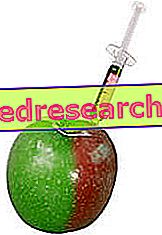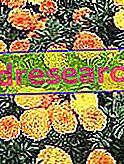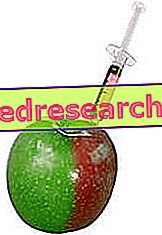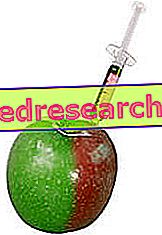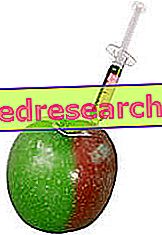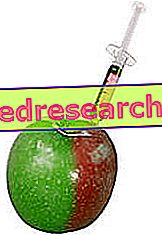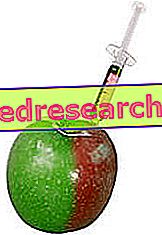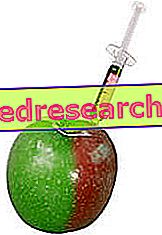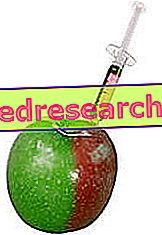E140 - CHLOROFILLA and CHLOROPHYLLINE (CI 75810) Chlorophyll and chlorophyllin are water-soluble green dyes, extracted from vegetables (herbs, nettle, alfalfa), which at the moment are considered to be free of side effects harmful to health. Often, chlorophyll and chlorophyllin are contained in chewing gum, packaged ice cream, popsicles, sweets, etc
Category food additives
E150c AMMONIACAL CARAMEL Ammoniac caramel is a brown colored dye of synthetic origin. It is contained in soups, sauces, ice creams, popsicles, wine-based drinks, liqueurs, pastries in general, biscuits and preserves. Ammoniac caramel, if consumed within the recommended doses, is considered a non-harmful dye
E161b LUTEINA Lutein is the most widespread xanthine in nature. Its structure is very similar to that of β-carotene, but with two hydroxyl groups at the ends. Tagetes erecta flowers are the main source of lutein and are widely cultivated in Africa, Asia and Oceania. Lutein, therefore, is a dye of natural origin, yellow-orange in color.
E160d-LICOPINE or LICOPENE (CI 75125) Lycopene is a food additive formed only of hydrogen and carbon, belonging to the group of carotenoids. It is a red-colored dye of natural origin (obtained from tomatoes). It is important to emphasize that the quantity of lycopene present in the tomato depends on the degree of ripeness of the same
E155 - BRUNO HT or BROWN CHOCOLATE (CI 20285) Brown HT is a brown-colored azo dye of synthetic origin. This dye can be contained essentially in bakery and pastry products. It can give reactions of hyperactivity, asthma, rhinitis, urticaria and insomnia; moreover, if present in high concentrations, it can cause possible sedimentations in the renal and lymphatic levels
E154 BRUNO FK OR BROWN KIPPLER Brown FK or brown Kippler is a brownish azo dye of synthetic origin. As an additive, it can be contained in some fish products, and its use is limited to a few products, as there is the possibility that it may be mutagenic. If this dye is consumed in high concentrations, it is possible that it may settle at the kidney level and at the lymphatic level
E153 MEDICINAL VEGETABLE CARBON Medicinal vegetable charcoal is a black-colored dye of natural origin (produced from plant ashes). This dye is contained in various foods, but since it is not water-soluble its use is quite limited. May contain benzopyrene (carcinogenic compound). Side effects are not known
E160c EXTRACT OF PAPRIKA, CAPSANTINA, CAPSORUBINA Paprika extract is an orange dye of natural origin (obtained from paprika concentrate). It is an additive that can be contained in jams, cheeses, jams. No side effects are known at the moment and the acceptable daily dose is not even known. Despite this, the use of paprika extract as an additive is prohibited in some non-EU countries
E160b ANNATTO, BISSINA, NORBISSINA (CI 75120) Annatto, bissin and norbissin are orange dyes, of vegetable origin, used in the same food products as carotenoids. According to some studies, they could give allergic reactions; they are not recommended especially for children. ADI DOSE: 0.065 mg per kg of body weight
CAROTENOIDS (CI75130) E160a is a dye which in turn is divided into 2 subgroups: E160a (i) → MIXED CAROTENES E160a (ii) → β-CAROTENE The E160a are a set of colorants of varying colors from orange to yellow, of vegetable origin (that is, they are obtained from fruit and vegetable extracts). The human organism transforms them and converts them into vitamin A and this means that there are no negative side effects; they are in fact considered to be harmless food additives for human health. Usu
E161a FLAVOXANTIN (CI 75135) Flavoxanthin is a yellow dye belonging to the xanthophyll family. Very little research has been done on this additive and for the moment no negative side effects are known; despite this, the use of flavoxanthin has been banned in Switzerland. E100 E101 E101a E102 E104 E110 E120 E122 E123 E124 E127 E128 E129 E131 E132 E133 E140 E141 E142 E150a E150b E150c E150d E151 E153 E154 E155 E160a E160b E160c E160d E160e E160f E161 E161a E161b E161c E161d E161e E161f E161g E162 E163 E170 E171 E172 E173 E174 E175 E180


